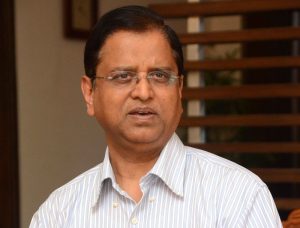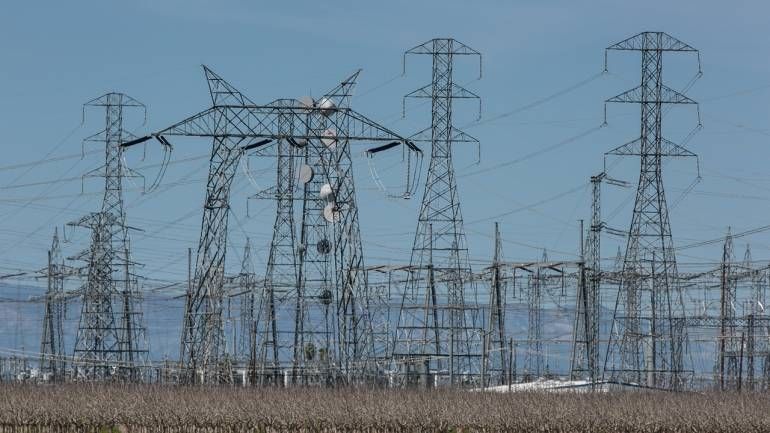http://www.moneycontrol.com/news/business/a-huge-transformation-of-the-power-sector-can-be-expected-2500499.html
Has the Union Budget 2018 planned for the radical transformation of the power sector that is needed?
But look close and you begin to see the first stirrings of policy change which could overhaul the power sector.
The recently tabled Union Budget did not talk about the power sector directly. But it did make mention of the fact that farmers with solar pumps would be helped to sell the power their solar panels generate to the grids, especially during the months when the solar power would not be required to draw water from the tubewells.

But look close and you begin to see the first stirrings of policy change which could overhaul the power sector almost entirely.
In a way, the first moves came in February 2016 when the power ministry decided to keep aside 40 GW of solar power generation exclusively for rooftop solar. Behind this move was the awareness that the maximum ‘bang-for-the-buck’would come from rooftop solar rather than from large solar farms (http://www.asiaconverge.com/2016/07/solar-methane-better-days-ahead/). .
But rooftop solar had another advantage. If harnessed properly, it could be a big employment generator as well. Moneycontrol spoke of how it could generate over 83 million jobs within a couple of years if the distributed cluster solar power model were to be adopted (http://www.moneycontrol.com/news/business/economy/the-electrifying-plan-that-would-create-83-million-jobs-from-solar-energy-2410301.html).
Post the tabling of the budget, Subhash Chandra Garg, Secretary Economic Affairs, Ministry of Finance, Government of India admits this. “Yes, we see a future for micro-grids,”he says while speaking to Moneycontrol.com in an exclusive interview. He admits that all the calculations done by the finance ministry show that rooftop solar through the distributed micro-grid model is a far cheaper way to generate electricity than supplying the remotest villages through the conventional grids.
That may not be easy. It is well known that while technical losses through the grids are not high, the real losses take place when the grid power is taken into the distribution network. That is where losses and theft both take place. Decentralised cluster solar power modules will automatically step in and reduce the incidence of such losses and theft. But the manner in which the bureaucracy has tried to derail solar power is there for everyone to see (http://www.moneycontrol.com/news/business/dear-pm-modi-heres-how-bureaucrats-are-planning-to-scuttle-your-rooftop-solar-employment-plans-2468501.html).
But Garg is optimistic that the budget provisions on the one hand, and the to-be-announced measure on the other could sort out this problem.
But the biggest beneficiaries of such theft are powerful people well-conne3cted with politicians. Will they agree to switch over from supply through the grid to off-grid micro-grid solutions? “That is something we need to work out with the power ministry,” explains Garg. “But I see no reason why this cannot be done. Thus the grid will continue to supply to high tension users like industry. But consumer power consumption will be transferred to micro-grids, and the main grids will be required to stay off such supplies.
The model Garg has in mind is one which allows entrepreneurs to take up the management and operation of these micro-grids. That way, the entrepreneurs will have a very profitable business to work on. They will provide electricity to villages, which fits is perfectly with the government’s vision of power for all. And – most importantly – such moves will also generate employment.
Since the main grid and the discoms will no longer be required to supply subsidised power to the rural sector – this will be taken over by the micro-grids – the cross-subsidisation pattern adopted by the entire country will gradually become a thing of the past. This would mean that industry would now be able to get power at under Rs.5 a unit, which in turn could improve their competitiveness in the global market as well. Currently industry pays around Rs.8 a unit, while commercial enterprises pay around Rs.12. Hoardings and malls are required to pay as much as Rs.15. These higher tariffs were meant to cross subsidise the cheap power offered to the rural sector.
Garg agrees with this analysis… He believes that with the cross-subsidisation out of the way, there is no reason why industries should not be encouraged to generate their own solar power. Today, state governments and discoms do not like this idea, because then industry would gain access to cheap power, which in turn would prevent the state from getting the money with which to subsidise rural power.
The micro grid will change all this.
Garg confirms this. He also believes that the next few months should see the roll out of policy initiatives aimed at encouraging microgrids on the one hand, and keeping way the main grid from supplying power directly to rural customers. Garg believes that the micro-grids are so profitable for entrepreneurs, that the need for further incentives will not arise. And should there be a need, his ministry already has in place, through the Solar Energy Corporation of India, various forms of viability gap funding.
This could mean less smog caused by coal consuming and smoke belching power plants. It could mean reduced import bills for diesel which is sued by gensets in the rural areas. And it could mean a lot more employment than many seemed feasible till now.










































COMMENTS